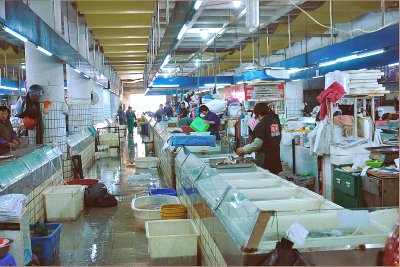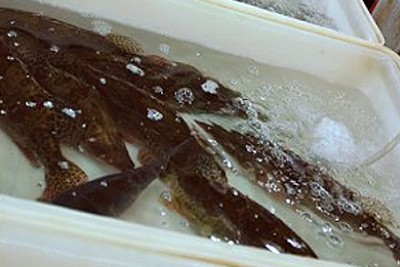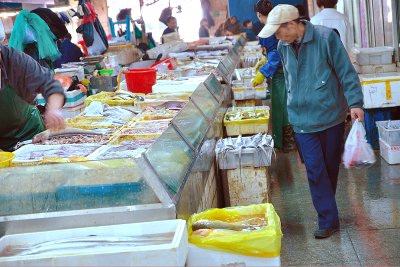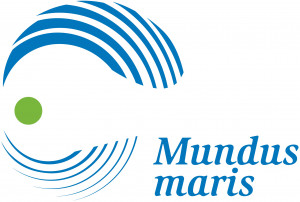by Kun Cleo Zhang, photos by Wulong Zhang
When I first came to Europe, I found it is different how European people purchase and eat fish compared to Chinese. For me, this difference is interesting and I started to pay attention on the ideas behind the two different behaviours.
In my home town, Jiaxing, Zhejiang, in China, families are used to go and buy live fish at the market. There, fishmongers keep fish in basins and plastic boxes and customers can choose which ones they want.
Then, people can either ask the fishmongers to kill and clean the fish or bring the fish back home and dress it by themselves.

Even for the frozen sea fish, the fishmongers will keep the whole body of the fish on ice so that customers can have a look and select. Similarly, in Chinese restaurants, all kinds of live fish are kept in tanks. Most of the time, customers can choose, which particular fish they want for the dish. And when people eat, they eat the whole fish, including the head, tail, and fins.
However in Europe, the majority of people go to supermarkets to buy fish which is already filleted and presented in portions in a refrigerator. Both in common families and restaurants, you only see filleted fish served on the dinner table instead of the whole fish.
I think it is very difficult for people without any fishing background to tell whether a fillet is from a baby fish or an adult fish. If all fish on the shelves are fillets, how can common people tell whether what they eat was from an adult?

From this perspective, I think that to buy live fish at fish markets is a more sustainable way, because people can see and tell immediately with their own eyes whether they are baby fish or not.
However, I found that fish markets make people feel guiltier later. More European people regard buying or ordering live fish as “point ‘n’ kill”, which means that the customer choose a living fish, to see that fish killed. And this makes people feel terrible, somehow like a murder. From this perspective, fish fillets seem to make people enjoy their meals more.
I cannot say which of the two behaviours is better than the other one, because every country has its own fish eating culture and there is no such thing as a “right” or “wrong” answer. But I believe that our goal that the sea and marine animals develop in a more sustainable way is the same.

Los mariscos que comemos
- Win Big – Baltic Event
- World Food Day 2024, Joint Webinar with Fish Party
- Relator Especial de la ONU sobre el derecho a la alimentación
- Audiencia del Parlamento Europeo sobre la iniciativa ciudadana de la UE para detener el corte de aletas de tiburones
- Keynote at the ‘Feed the Future – Innovation Lab for Fish’
- Seminario web de la FAO ‘Peces pequeños y de bajo coste: del cebo al plato’, 15-16/02/2021
- Disfrute de deliciosos y sostenibles pescados y mariscos con los talleres de Mundus maris
- Chiloé, o: Los desastres de Salmonopoly
- Seafood Symposium – From Fisheries to Foodies, 27 April 2015
- Baltic students concerned about sustainable foods, Rogow, Poland, 15-19 April 2015
- From plates to fuel – the controversial seaweed boom in Chile
- Khazan – Traditional coastal zone management in Goa, India
- Environmentally conscious consumer behaviour in food – what can I do?
- Save baby fish or Point ‘n’ kill?
- “Inseparable” – Fish sustainability campaign celebrates event in Athens
- Respetar la talla mínima de los peces ¿Qué dicen los comerciantes de pescado en el Senegal?
- The Mundus maris campaign in the urban markets in Dakar
- Let’s save the Oceans! – Cercle Europa invites
- International Study Group Brussels: Save the Seas!
- Mercado San Miguel in Central Madrid
